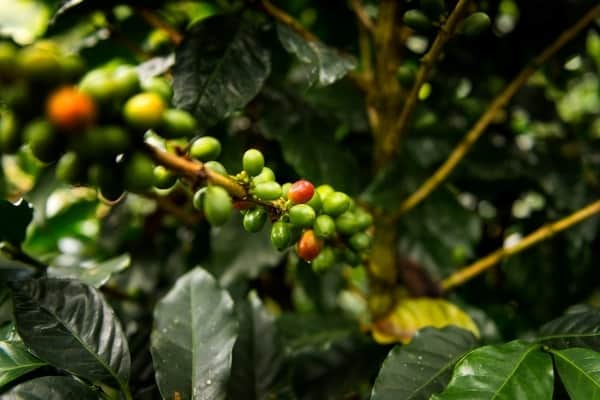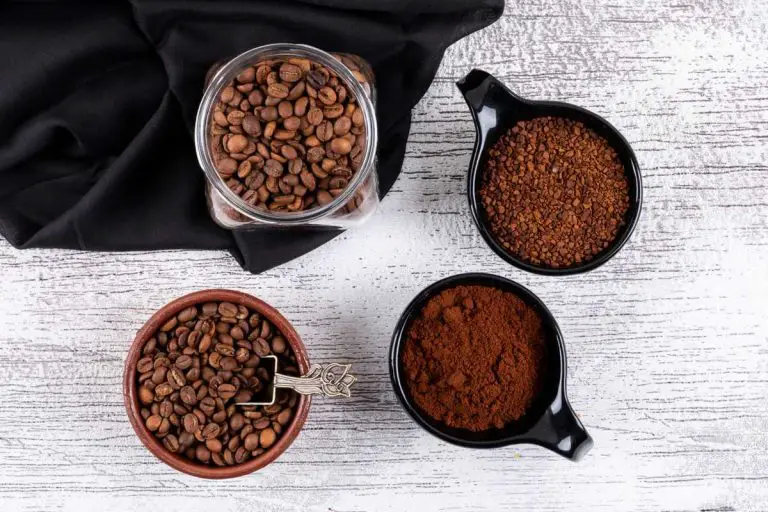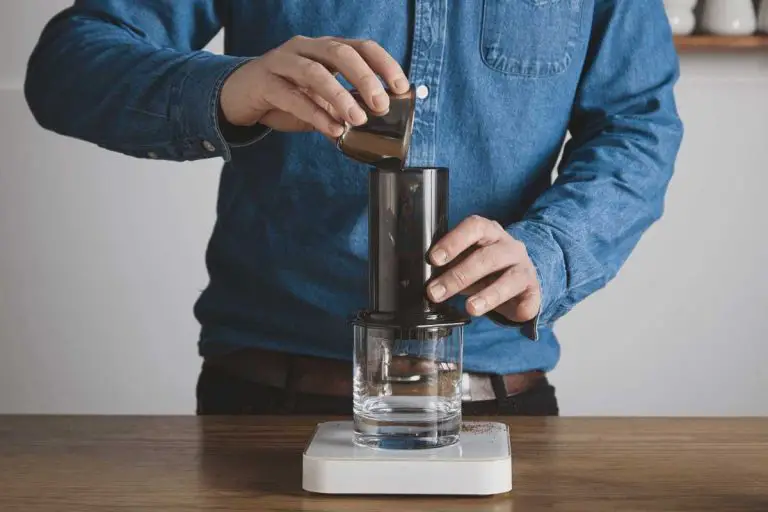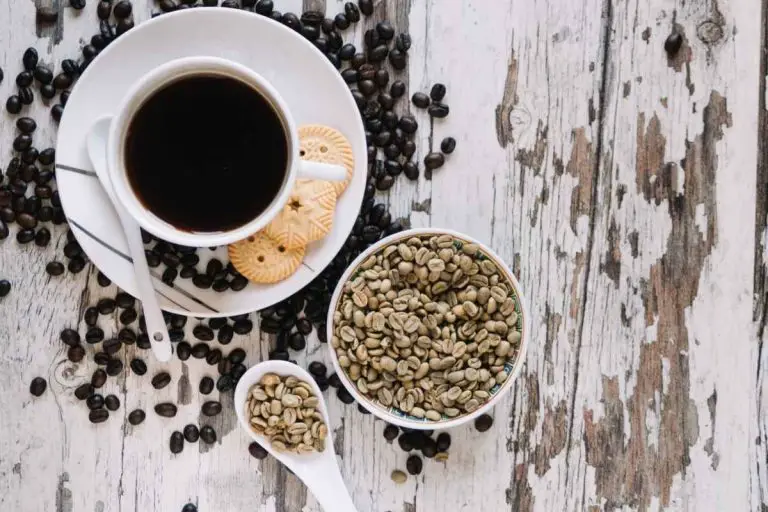Is Coffee a Plant? (Where the World’s Coffee Comes From)
Coffee is part of everyday life for much of the world, but few question where on earth it comes from. In this article, we take a look at where the world’s coffee originates and how it grows.
All coffee beans come from the coffee plant, which is of the Coffea genus. The coffee plant is a small shrub or tree that bears fruit along its branches. Within each fruit lies one or two seeds, which are better known as coffee beans. The coffee plant may grow up to 10 metres (32ft) in the wild.
As with any plant, there are many different varieties. Every variety has an effect on the quality of its coffee beans. Read on to find out how you can buy the best-tasting coffee.
The coffee plant
The coffee beans that give us all the delicious coffee beverages are from a type of flowering plant. The plant produces fruits that contain either one or two green seeds.
These green seeds are actually what we call coffee beans. Coffee beans are not a type of vegetable but the seeds of the coffee fruit. They are only called beans because of their similar appearance to normal beans (legumes).
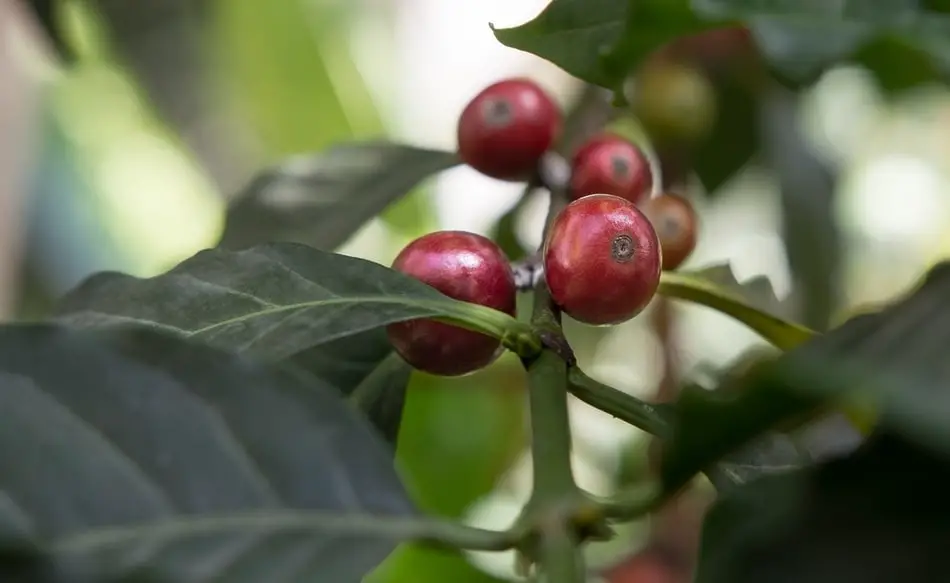
The coffee plant is of the Coffea genus, which is part of the botanical family called Rubiaceae. There are about 100 species of Coffea around the world.[1]
The coffee plant a type of shrub or tree that is capable of growing as high as 10 metres (32ft).[2] It’s native to eastern Africa and has had a long and turbulent history during its spread across the world.
Today, coffee plants are cultivated in over 70 countries, primarily in the Americas, Africa and Asia.[3]
The most common species of coffee plant is Coffea arabica, better known as arabica. The seeds (beans) of the arabica plant makes up around 60 – 70 percent of all the coffee consumed worldwide.[4]
The second most common species of coffee plant is Coffea canephora, better known as robusta. Robusta coffee makes up the majority of the remaining 30 – 40 percent of the coffee consumed worldwide.[5]
Accounting for less than two percent is the species Coffea liberica, better known as liberica. Liberica coffee has come close to extinction many times in the past, which is why its quantities are limited and price tag expensive.[4]
The coffee bean
Coffee plants are most productive between the ages of seven and 20, despite the fact they can live up to 100 years. During this period is when the coffee plant produces good-tasting coffee beans.[6]
Coffee plant takes three to four years before it first starts to flower, and around a year or two later, the plant will start to bear fruit.[7]
Once the plant has begun to bear fruit, it may be harvested in order to extract the seeds (beans) from the fruit.
The average coffee plant produces 4.5kg (10 pounds) of coffee cherries per year, yielding 1kg (2 pounds) of green beans.[6]
The raw, green coffee beans undergo a rigorous processing method which eventually leads to them being dried in preparation for roasting. The roasting process turns the beans from their original green colour to the various shades of brown that we’re all familiar with.
Roasting the green beans is essential in order to impart flavour. Unroasted green beans have an earthy, grassy and hay-like smell which is not pleasant at all.
The roasting process creates chemical reactions such as the Maillard reaction that give us the familiar flavour and aroma that we all enjoy so much.
The popularity of coffee isn’t just because of its wonderful taste but also for the natural stimulating effect caused by its caffeine content, which is most concentrated in the coffee beans.
All coffee naturally contains caffeine because the coffee plant uses caffeine as a natural pesticide to protect its leaves and fruit from pests. Caffeine is naturally bitter, something that is toxic to bugs and insects.[7]
The plant also uses its caffeine for a second reason. Small amounts of caffeine are contained in the nectar of the coffee flowers. The caffeine attracts pollinators, specifically honeybees, by creating a strong and memorable smell that signals bees to return to the plant’s flowers.[8][9]
Enjoying this article? Don’t miss 50 Tips for Making Better Coffee.
What does the coffee plant look like?
Coffee plant is a woody shrub or tree that can grow to over 10 metres (32ft) high in the wild.[2]
Farmers often prune the plants to around 2 metres (6ft) to conserve their energy, something which also makes harvesting of the coffee fruit a lot easier.[2]
As with any plant, each variety has its own characteristics. Here’s a list of some things that are common to many coffee plants, particularly the most popular arabica variety.
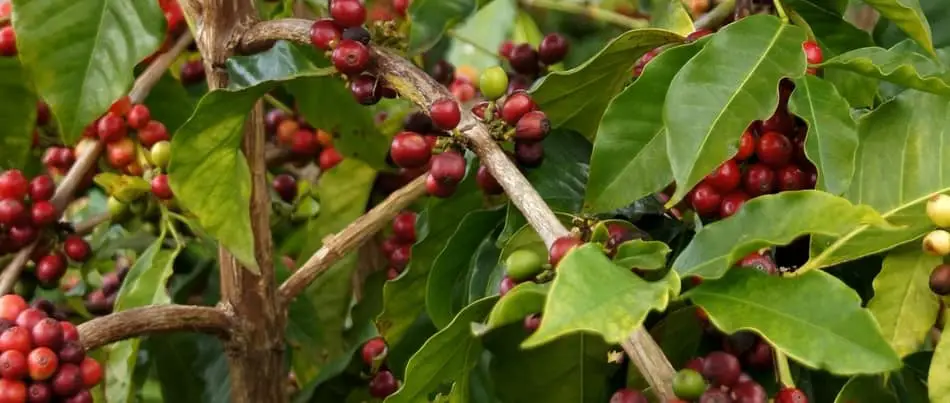
Branches and leaves
At each node along the vertical stem of the coffee plant, two near-horizontal branches grow in opposite directions to one another.[1]
Along the branches grow the leaves of the coffee plant. The leaves are usually waxy and dark green in colour, although some less common varieties may be purple or yellow.
The leaves, which range from 2.5cm – 40cm (1 inch – 16 inch) in length, grow opposite one another in pairs and are ovate in shape with a pointed base and tip.[6]

Flowers
Buds form where the leaves join the horizontal lying branches, producing clusters of delicate, white flowers that have a fragrant aroma.
It takes around three to four years for a coffee plant to begin flowering. The flowers are vitally important as they are where the reproductive organs are located.
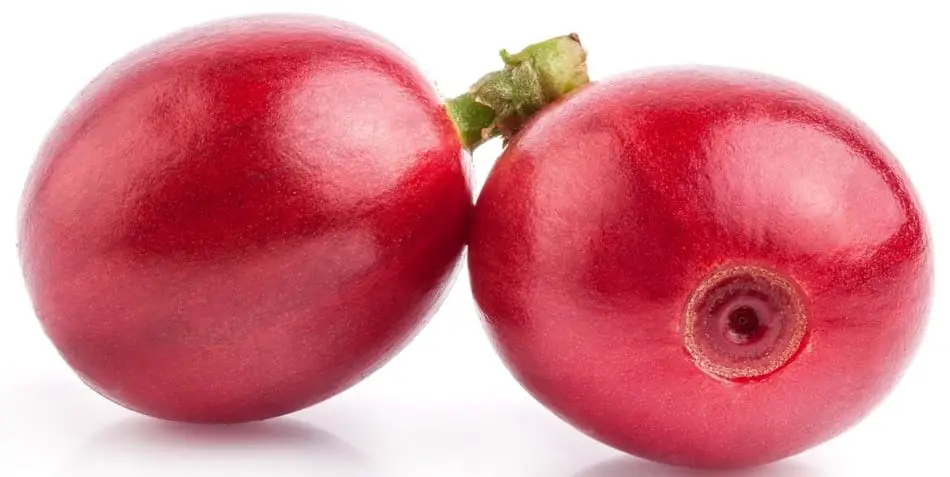
Fruits
The fruit of the coffee plant is a type of drupe (stone fruit) that grows in clusters at the same point where the flowers are located. They begin growing around a year after the plant has begun flowering for the first time.
The fruit, which is about the size of a small grape, is green in colour and turns to red, yellow or orange once fully ripened. The outer layer of the fruit is edible and has a sweet taste and pleasant acidity.
The fruit is commonly referred to as the coffee cherry due to its resemblance to normal cherries. The coffee cherry is usually disposed of during processing, although some farms decide to dry them in order to make a fruity infusion called cascara.

Seeds
Within each coffee cherry are either one or two seeds (coffee beans). Most cherries contain two seeds; however, around five percent of coffee cherries only contain one round seed, which is called a peaberry.
Because the two seeds grow together inside the coffee cherry, one side is flat and the other side is convex.
Peaberries (single seed) form when one ovule fails to pollinate. This occurs when there is a natural mutation or defect inside the coffee cherry.
When only one seed occurs, it may not always be called a peaberry. Peaberries are round in shape, hence the name. It’s possible for single seeds to grow that resemble normal coffee beans with a flat side and a rounded side.
Where does the coffee plant grow?
Most of the world’s coffee grows in a part known as the coffee belt. The coffee belt’s location is between the Tropics of Cancer and Capricorn, about 23 degrees above and below the equator. From north to south of the coffee belt, the distance is about 3,200 miles (5,150km).
Coffee plants thrive when they are grown at elevation due to the more stable climatic conditions.
Coffee plants dislike direct sunlight and heavy rainfall. Countries with distinct dry and rainy seasons are most suited to coffee production as the wet season provides moisture for new seedlings as well as for the roots of established plants to spread and germinate.
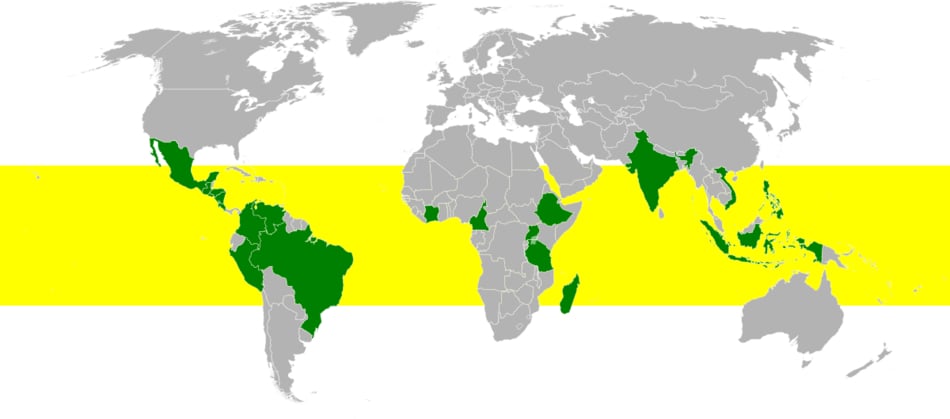
All coffee contains varying levels of caffeine, its natural defense mechanism against pests.
As the arabica plant contains around half the levels of caffeine of that of the robusta plant, it has to grow at higher altitudes where fewer pests live.
Arabica also prefers a cooler climate. Therefore, arabica grows best between 1000 – 2000 metres above sea level (3250 – 6500 ft).
As robusta has such a high caffeine content and favours warmer climates, it’s able to grow at far lower elevations. Typical elevations are between 200 – 600m (650 – 2000ft).
Arabica vs robusta: why you should only drink arabica
Whilst robusta is a lot hardier and easier to grow, arabica coffee is by far the tastiest of the two.
Arabica coffee contains more sugars and other desirable attributes that produce a sweet and balanced cup of coffee.
As caffeine is naturally bitter, the lower levels of caffeine in arabica also mean that it’s less bitter.
Coffee that is grown at altitude also results in a more complex cup of coffee. Generally, the higher the coffee is grown, the tastier it will be.
Brazilian arabica has a characteristic taste of chocolate and nut, but as it is grown at the lower end of the spectrum for arabica coffee, it lacks acidity, which is an identifier of good-quality coffee.
In countries such as Ethiopia, Kenya and Colombia, the coffee may grow as high as 2000m. This results in more floral-tasting coffees with fruity notes that are sweeter and with beautiful acidity.
Despite the fact that arabica is vastly superior, robusta remains popular as the variety is naturally more resistant to disease, making it easier to grow.
Unfortunately, most robusta coffee is unpleasant to drink as it has earthy, woody, rubbery and tobacco-type notes with no acidity.
As such, it’s used in the production of instant coffee and also for creating coffee blends. Robusta coffee is often used to make espresso as it produces a large volume of crema.
Crema is often sold as an alluring element of espresso coffee (featured heavily in adverts such as for Nespresso), but in reality, it tastes nasty.
Drink a better variety of coffee
If you’re sceptical about the ways we’ve described good-quality coffee here, give it a try for yourself as it’s easy to find.
Try googling specialty coffee near me, and visit a local cafe to see what you think yourself. Whichever coffee you decide to order, give it a try without sugar first. You’ll be shocked at how delicious good coffee is and the fact that it’s not bitter at all.

